- India
- International
The 6 Padma
On the eve of Republic Day this year, President of India conferred the Padma Awards, one of the highest civilian awards, to 112 people from various disciplines. Out of the 94 Padma Shri awardees, six were from Gujarat. The Indian Express profiles the six personalities — from a farmer to a folk art historian
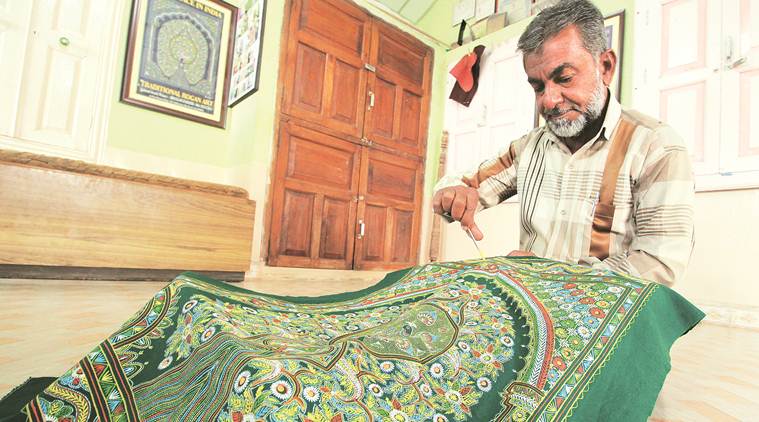 Khatri is among the six from Gujarat who have been conferred Padma Shri on Republic Day. “Samman ka koi mulya nahi hota (There is no price tag for an honour),” says Khatri. (Express: Javed Raja)
Khatri is among the six from Gujarat who have been conferred Padma Shri on Republic Day. “Samman ka koi mulya nahi hota (There is no price tag for an honour),” says Khatri. (Express: Javed Raja)
The last surviving custodian of Rogan art
Abdul Gafur Khatri
Profession: Rogan artist
Previous recognitions: State award in 1988, National award in 1997
Abdul Gafur Khatri had nearly mastered the 300-year-old Rogan art at the tender age of 13 years. Now 53 years old, his family is the last surviving custodian of the art form.
“I must confess that this is a dream come true,” says Khatri recalling the day when he received a call from government officials informing him that he was one of the Padma Shri recipients of 2019. “Our (family’s) struggles have borne fruit. It is a matter of pride for Kutch since I don’t think anyone from Kutch has been bestowed with this honour before,” says Khatri, a resident of Nirona village in Kutch district.
Khatri is among the six from Gujarat who have been conferred Padma Shri on Republic Day. “Samman ka koi mulya nahi hota (There is no price tag for an honour),” says Khatri.
The word ‘rogan’ has been derived from the Persian word ‘rogan’ meaning ‘oil-based’. The paint is made of a thick residue formed when castor oil is heated and cast into cold water. After it is mixed with natural colours, the residue is drawn out into a fine thread-like paint and then drawn on the cloth, using the fabric as a base.

Khatri, who has extensively explored the “Tree of Life”, an intricate design, motifs in many of his works, says, “Depending on the detailing involved, work can take from four days to a year to complete.”
A recipient of a state award (1988) and a national award (1997) bestowed on him by then Prime Minister, late Atal Bihari Vajpayee, Khatri recalls the time when Prime Minister Narendra Modi on his visit to the US in 2014 gifted former president Barack Obama Khatri’s motif of “Tree of Life” on a piece of cloth in two different shades of green and red.
“Since then, the motif has been so popular that it has generated a lot of demand and interest. Modiji has been supportive of our work since the time he was the chief minister of Gujarat,” he says. He goes on to say: “I have fulfilled my promise to my father that I will take this art form to international platform. And it happened when Rogan art reached the White House and was presented to former US President Barack Obama by our Prime Minister in 2014.”
Though practised only by the male members of his family, since 2010 Khatri has been conducting workshops and has taught the art form to over 350 girls. “At some point of time, decades ago, there were four Muslim Khatri families practising this (art) in Kutch, but subsequently everyone stopped except us.”
Khatri was the first to introduce the intricately-designed aspect of this art form. Prior to him, Rogan art was used only as rudimentary motifs to serve for utility purpose as per the tribal origins of the art form. “Rogan motifs once graced mainly ghaagra-choli, bed sheets and table cloths, but the art now adorns more contemporary items and also used on decorative items such as wall hangings and framed-cloth pieces,” he says. Khatri, who runs his own unit in Nirona, is the seventh generation of his family practising Rogan since the last 46 years. Today, 10 of his family members are carrying forward the legacy, with four of them, including him, being national award winners. The family has also employed 20 girls from the village in their unit.
“Now in the eighth generation, my oldest son is the only member of the current generation who has chosen to embrace Rogan,” says Khatri. He, however, says that till 1993 he was not so impressed by Rogan and did jobs in Ahmedabad and Mumbai to earn a livelihood.
The 93-year-old who brought nutritious carrot to table
Vallabhbhai Vashram Marvaniya
Profession: farmer
Previous awards: National Innovation Foundation award in 2017
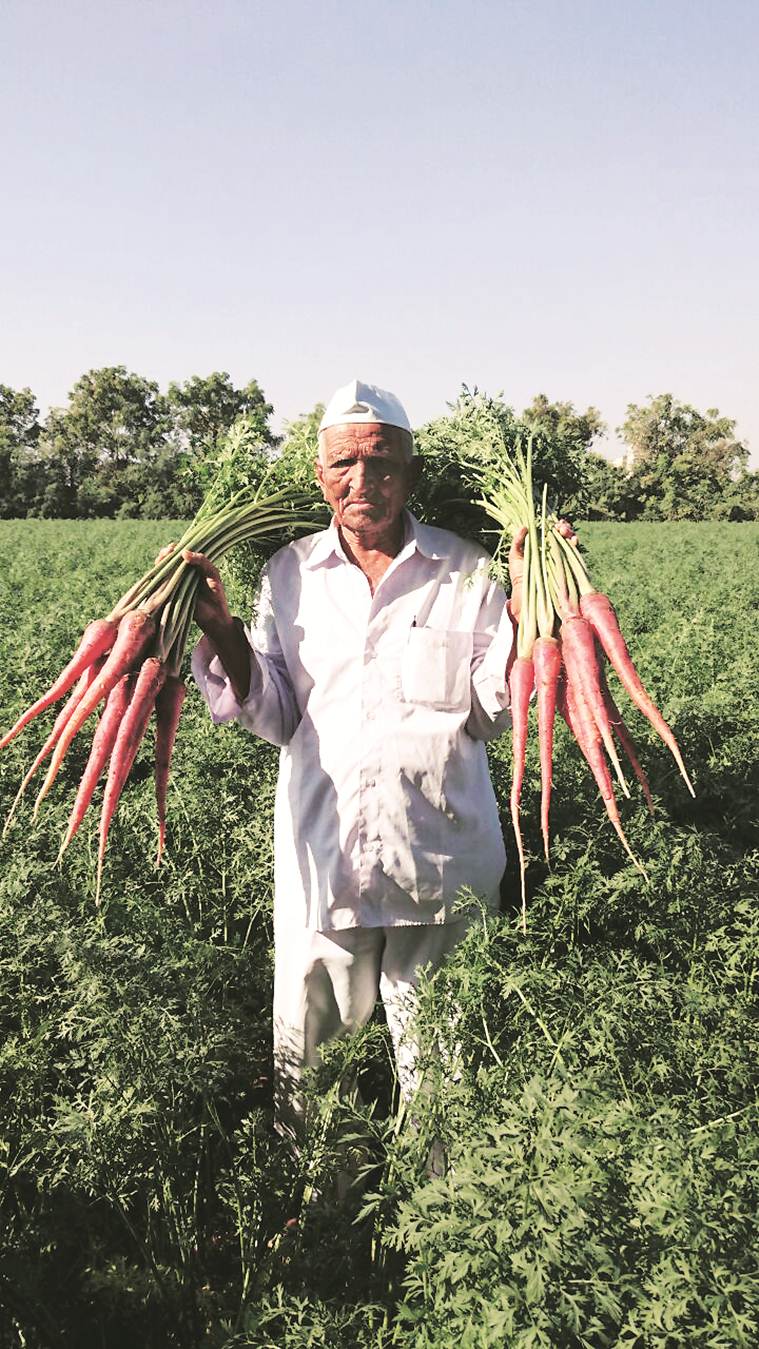 As per the Anand Agricultural University’s 2017 test report, Madhuvan variety of carrot has 277.75 mg beta-carotene per kg against the normal 70-80 mg per kilogram.
As per the Anand Agricultural University’s 2017 test report, Madhuvan variety of carrot has 277.75 mg beta-carotene per kg against the normal 70-80 mg per kilogram.
Even today Vallabhbhai Vashram Marvaniya, 96, walks around his 10 bigha land everyday at Khamadrol village of Junagadh district to personally inspect the crop even as his 56-year-old son, Arvindbhai, has taken the charge of farming and seed production of one of the rarest varieties of carrot named ‘Madhuvan’ — as the Marvaniyas have named it.
As per the Anand Agricultural University’s 2017 test report, Madhuvan variety of carrot has 277.75 mg beta-carotene per kg against the normal 70-80 mg per kilogram.
“My father has been awarded for his hard work and perseverance. He has been growing carrots since 1943. After repeated improvisations and trials, we finally came up with this carrot variety,” says Arvindbhai, who has been helping his father in farming since 1985.
Initially, Marvaniyas would grow carrots for their own family but slowly the demand forced them to do it for the villagers as well. Same happened with the carrot seeds, which they grow in their field. The family, a Kadva Patidar, today grows carrot, carrot seeds and vegetables for sale.
Documenting rural life through painting
Jyotindra Bhatt
Profession: Painter
Previous awards: National award 1963
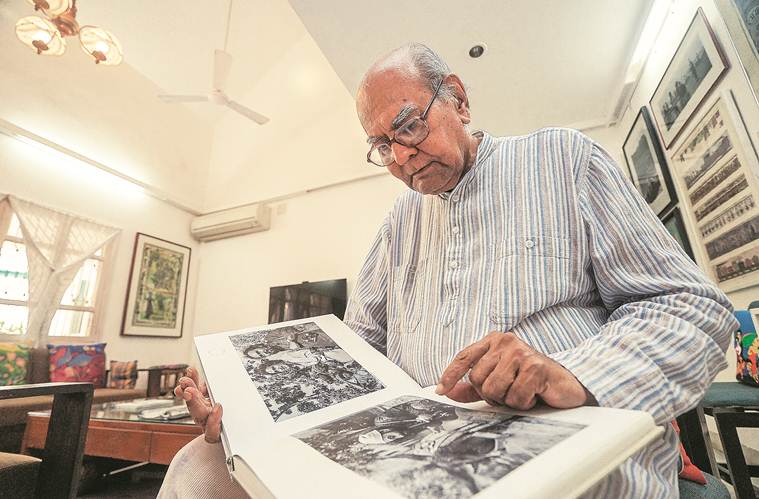 Bhatt’s works have made their presence felt in contemporary spaces such Museum of Modern Art and Smithsonian Institution in the US as well as in more traditional spaces with his thorough documentation of rural life and arts. (Express: Bhupendra Rana)
Bhatt’s works have made their presence felt in contemporary spaces such Museum of Modern Art and Smithsonian Institution in the US as well as in more traditional spaces with his thorough documentation of rural life and arts. (Express: Bhupendra Rana)
Jyotindra Bhatt, 84, is a graduate in painting from the Maharaja Sayajirao University (MSU) of Baroda. Hailing from Bhavnagar, Bhatt started with oil and water colour paintings, and subsequently took strongly to printmaking and specifically to the intaglio format, which involves inking incised surfaces. With intaglio, Bhatt incorporated popular Indian motifs, including mythological figures and also drawing inspiration from folk art.
His works have made their presence felt in contemporary spaces such Museum of Modern Art and Smithsonian Institution in the US as well as in more traditional spaces with his thorough documentation of rural life and arts.
For the love of folk culture
Joravarsinh Jadhav
Profession: Author & folk art historian
Previous awards: Shri Zaverchand Meghani award in 2015
 Born in a family of farmers in the district of Dhandhuka (now Ahmedabad) in colonial India, Jadhav has been a patron of folk artistes, especially in Gujarat. (Express: Javed Raja)
Born in a family of farmers in the district of Dhandhuka (now Ahmedabad) in colonial India, Jadhav has been a patron of folk artistes, especially in Gujarat. (Express: Javed Raja)
Joravarsinh Jadhav, 79, a pioneering figure in folklore and folk culture and founder of Gujarat Lok Kala Foundation. A man of humble beginnings, Jadhav has published as many as 94 books based on folklores.
Born in a family of farmers in the district of Dhandhuka (now Ahmedabad) in colonial India, Jadhav has been a patron of folk artistes, especially in Gujarat. An author, fiction writer and philanthropist, Jadhav has now devoted his life largely to providing spaces to folk artistes and putting them on the world map.
‘Hellen Keller’ with a vision
Muktaben Dagli
Profession: Runs a school for visually Impaired
Previous awards: National award in 2009
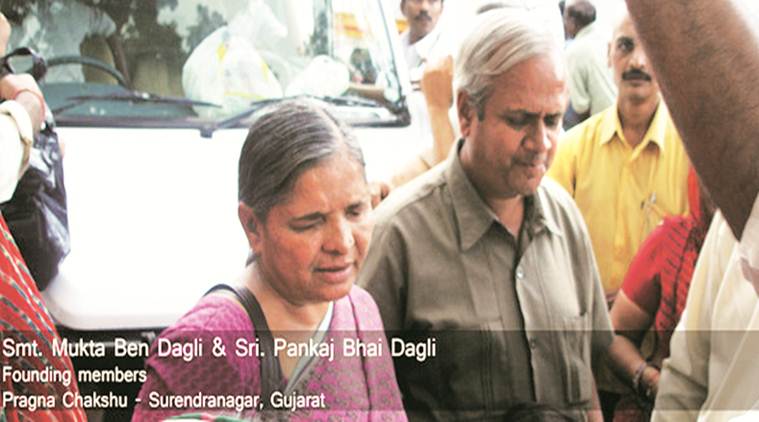 Muktaben and her husband Pankaj Dagli both decided early in their lives that they would not have their own children and instead adopt visually-impaired girls abandoned by their families. (Express: Aditi Raja in Vadodara)
Muktaben and her husband Pankaj Dagli both decided early in their lives that they would not have their own children and instead adopt visually-impaired girls abandoned by their families. (Express: Aditi Raja in Vadodara)
Muktaben Dagli, 58, one of the two founders of a school for visually impaired — Pragna Chakshu Mahila Kunj — in Surendranagar district, is popularly called “Hellen Keller” of the area.
Muktaben and her husband Pankaj Dagli both decided early in their lives that they would not have their own children and instead adopt visually-impaired girls abandoned by their families. Today, they have adopted over 200 such girls, and helped them settle.
Attributing their vision to Tulsidas, the website of their organisation states, “Understand the pain of dumb animals. Pain of disabled can be understood very well by a disabled person. And so, the institution has decided to work for blind girls enwrapped in suffering, moving with affliction, being insulted and disdained at every step in the society. This institution moved the blind girls lying in huts in the villages and made them reside in independent houses, for who her own home is like a dream, and for whom marital bliss is like a water bubble.”
The institution gave homes to these girls and started specific activities “with help of gentlemen and leading merchants of the society”, according to the website.
Dagli is a 1983 alumnus of Ahmedabad’s Andh Kanya Prakash Gruh, where Prime Minister Narendra Modi had been a regular guest at events when he was the Gujarat chief minister. Her blind school has 200 girls studying from Class I to XII. She runs a residential school and conducts vocational training for girls in computers, beauty care, handicrafts, among others. Muktaben was seven years old when she lost her vision to meningitis.
Her charity with centers in Morbi, Junagadh and Surendranagar runs on generous donations from patrons, who have lauded her contribution towards the betterment of the lives of the visually impaired.
Giving shapes & forms to cities and peoples’ lives
Bimal Patel
Profession: Architect
Previous awards: Aga Khan Award in 1992
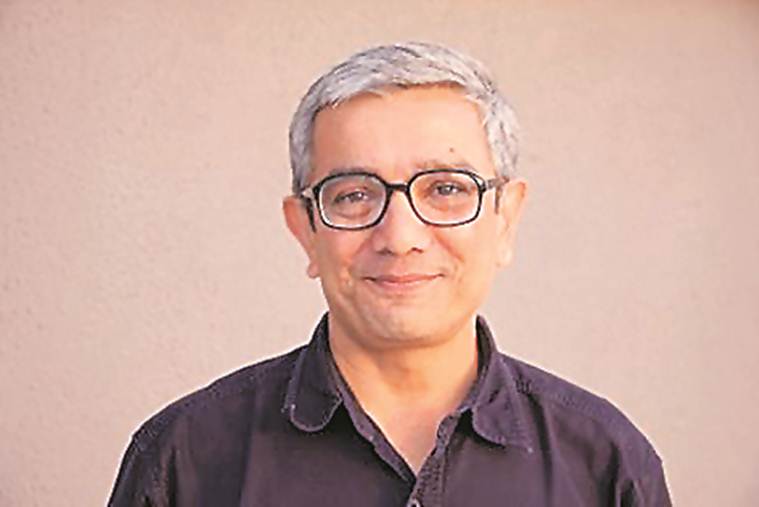 The designer behind the campus for Entrepreneurship Development Institute, in Gandhinagar, won an Aga Khan Award for Architecture in 1992.
The designer behind the campus for Entrepreneurship Development Institute, in Gandhinagar, won an Aga Khan Award for Architecture in 1992.
Ahmedabad-based architect and currently the president of CEPT, Bimal Patel, 57, is also a practising architect at HCP Designs and Project Management.
With a doctorate in City and Urban Planning, Patel has given shape and form to many of the city’s buildings such as the new IIM campus, and had revamped urban spaces with the Kankaria Lake development project. The designer behind the campus for Entrepreneurship Development Institute, in Gandhinagar, won an Aga Khan Award for Architecture in 1992.
With his continued focus drawn towards urban planning, Patel has played an instrumental role in policy-making in Gujarat. In 1997, Patel founded Environmental Planning Collaborative (EPC), a non-profit company that continues to work with local governments on city planning. EPC is the one the first non-profit organizations to helm the Sabarmati Riverfront Development Project.
Apr 26: Latest News
- 01
- 02
- 03
- 04
- 05








































